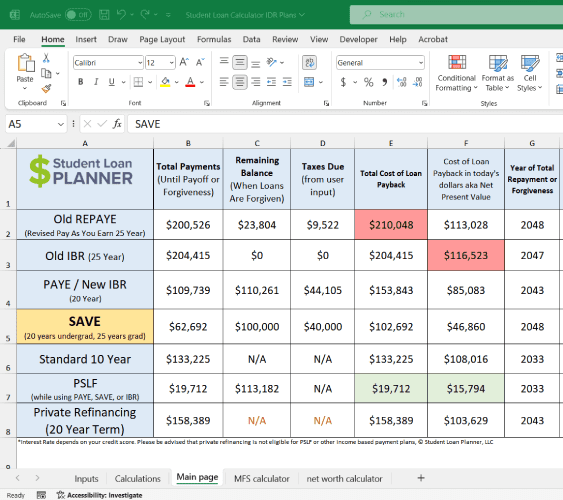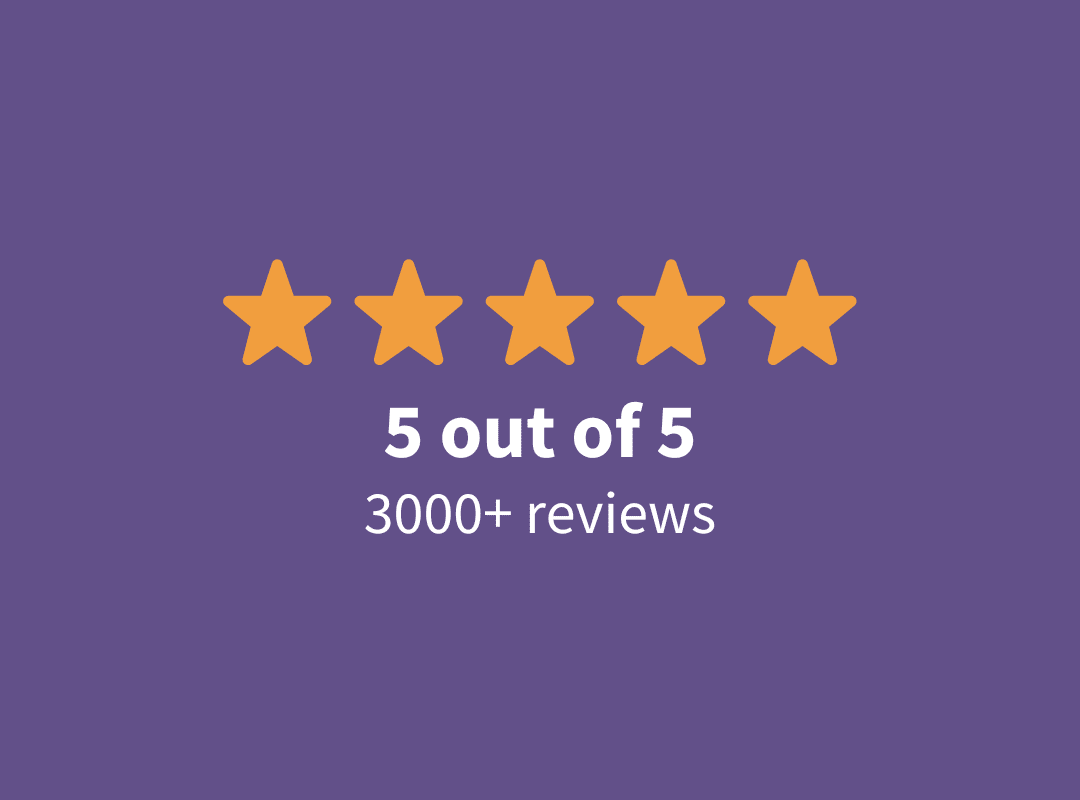
Since 2008, everybody wants to be the next genius who spots the next overpriced sector of the economy to collapse. Record auto loans? Bubble. Huge tech stocks trading at over 50-times earnings? Bubble. When you look at how fast the $1.6 trillion student debt crisis in America has exploded in size relative to other kinds of debt, you might want to call out the supposed student loan debt bubble, too.
But is there actually a student loan bubble in America today? Let’s find out — and also look at what could happen if this hypothetical bubble bursts.
What is a financial bubble?
According to Nasdaq, a bubble is a “market phenomenon characterized by surges in asset prices to levels significantly above the fundamental value of that asset.”
In the late 90s, investors threw tons of money into dot-com stocks. They assumed this new era eliminated the need for traditional investment analysis of cash flows and profits. Obviously, they were wrong.
In the mid-to-late 2000s, the market price for housing was far above the real value for a variety of reasons, such as loose lending standards and a widespread belief that national home values always go up. The result: a housing bubble.
These bubbles generally involve private investors losing money. However, student loan debt is mostly owned by the federal government.
Get Started With Our New IDR Calculator

Is there a student loan debt bubble?
Student loan debt is only an asset to the ones who hold it. By far, the biggest holder of student debt in the U.S. is the American taxpayer.
So, is the market price of this student debt above its fundamental value? That’s a very confusing thing to say. With all the income-based loan repayment plans and forgiveness programs available on federal loans, along with over $100 billion on track for total tax-free debt forgiveness under Public Service Loan Forgiveness (PSLF), a private investor wouldn’t want to buy this debt portfolio except at a steep discount.
If the $1.6 trillion was totally forgiven, that would be a big hit to the U.S. government. However, it’s a blow the government could afford. Yes, taxes would be higher or the government might cause inflation. But this giant student loan portfolio doesn’t sit on a bank’s balance sheet with $40 trillion in derivatives written on it.
Really, there’s a bubble in the value of higher education (e.g. tuition and fees). And that’s what I mean when talking about a student loan bubble. We’re saying the market price (what you pay for a degree) is above the fundamental value in many cases (what that degree is actually worth).
I think the student loan bubble can easily be seen with the three examples below for professional programs. Each of these numbers are examples of what we’re seeing in our data among the thousands of high-debt student borrowers we’ve advised at Student Loan Planner®.
- New York University College of Dentistry: Debt $550,000; starting income $130,000
- Oregon College of Oriental Medicine: Debt $300,000; starting income $40,000
- Life University Chiropractic: Debt $250,000; starting income $50,000
You don’t need to be a genius to see it doesn’t make financial sense to borrow $250,000 for a chiropractic degree that pays $50,000.
The cost of college at many schools has exploded because of unlimited government guaranteed borrowing.
Is there a student loan bubble for undergrad degrees?
I don’t think you can state that there’s a student loan bubble across the board for undergrad unless you count ParentPLUS loans. If you only look at the debt in a student’s name, most undergrad students cannot take out more than $57,500 even if they try.
A typical student loan balance for an undergraduate student is about $30,000. That’s equivalent to buying an expensive new car. And new college graduates have been making this financial mistake for a long time.
I’ll agree that the cost of undergrad has gotten much more expensive, but the returns to education are high. The Social Security Administration estimates that men with bachelor’s degrees will earn $900,000 more than men with high school degrees.
That’s men overall, of course. I think top-100 undergrad programs remain a fair value at any debt level below $50,000.
The bottom-tier undergrad programs might now be worth a lot less than the fundamental value. With for-profit colleges closing right and left, it seems obvious that some bachelor’s degrees out there are pretty close to worthless.
However, the typical undergrad student at a public college is still making a rational trade of debt for a degree.
Our student loan system doesn’t necessary have to collapse
By definition, a sector of the economy can’t grow above inflation forever or it would become the entire economy. That said, sectors can definitely expand as a percentage of the economy.
Healthcare spending in the U.S. was 6.9% of gross domestic product (GDP) in 1970. This grew to 17.9% of GDP in 2017.
Education spending as a percentage of GDP will likely develop similarly before it plateaus. The government spends a massive amount of money on health care through programs like Medicaid, Medicare, and the Affordable Care Act. That spending won’t likely decrease a ton because there’s widespread political support for it.
Likewise, when education spending as a percentage of GDP peaks, there could be reform to spend the dollars more directly. Fewer loans and more grants, for example, or widespread student loan forgiveness or discharge to effectively create a system where the government pays for all education. Once the government has drastically reduced spending by individuals on education through taking a more direct role, spending might just remain high rather than collapse.
What happens if the student loan bubble bursts?
However, if the student loan debt bubble did burst, I think it would occur because of what’s going on with the job market rather than what’s happening to the price.
Right now, a professional degree is the safest path to higher wages. You can convert your student loan payments to a tax on your income through income-driven repayment options. That limits the cost of your degree to 10% of your income no matter what you borrowed.
Would you rather be an NYU-trained dentist making $120,000 a year while losing 10% to loans or a debt-free dental hygienist making $60,000?
That’s the reality of what’s happening right now. It’s still rational to overpay for degrees because the consumer doesn’t really feel the full price paid.
If the government capped student loan borrowing for professional and graduate students, many high-cost programs wouldn’t be able to get private loans for students at today’s prices. Banks wouldn’t underwrite them. That would cause either large price reductions, school closings or reduced class sizes — or a combination of all three.
If the government doesn’t change student loan programs, students will only stop going when the job market for their degree falls apart. Pharmacy schools are already admitting far too many new graduates because of concern for their bottom line — at the risk of lowering salaries across the whole profession.
If we continue overproduction in certain fields, then salaries will decrease, competition for jobs will increase, the lifetime earnings students receive will get worse and college enrollment numbers will drop. This is the most likely endgame I can think of when it comes to what will happen when the student loan bubble bursts.
What can politicians do to prevent violent popping of the bubble?
If a well-meaning Republican politician tried to cap student loan borrowing at a very low ceiling, such as $50,000, they could close perhaps as many as half of the professional school programs. There might not be enough new grads to fill professional needs.
Should a well-meaning Democrat try to eliminate loans for funding higher education in the U.S., the reduced barrier to entry might cause new schools to continue opening and could push the labor market in fields like pharmacy, dentistry and other professions to a breaking point where they’re no longer attractive to go into.
If politicians want to avoid a massive student loan bubble collapse, they likely need to phase in reforms gradually considering this messed-up system took over 50 years to get to this point.
Here are a few proposals that could help ease the crisis, in no particular order:
- Cap borrowing to limit price gouging among universities
- Reduce interest rates on federal student loans if paired with borrowing caps
- Mandatory disclosures of the top 10% worst student debt burdens for graduating students at each program offering federal student loans
- Eliminate loans for higher education through direct government funding
- Simplify income-based repayment and forgiveness programs
- Force institutions to own a portion of their graduates’ student debt
Support for many of these ideas depends on your political ideology. That said, it’s clear that something should change. After all, the average borrower would say there’s definitely a student loan debt crisis for Americans.
The price for professional and some college degrees has become debased from the true value. We just don’t know if it’s a bubble that will pop — and how violently that will happen.
Do you think there’s a student loan bubble in America? Share your thoughts in the comments below!
Refinance student loans, get a bonus in 2024
| Lender Name | Lender | Offer | Learn more |
|---|---|---|---|

|
$500 Bonus
*Includes optional 0.25% Auto Pay discount. For 100k or more.
|
Fixed 5.24 - 9.99% APR*
Variable 6.24 - 9.99% APR*
|
|

|
$1,000 Bonus
For 100k or more. $300 for 50k to $99,999
|
Fixed 5.19 - 10.24% APPR
Variable 5.28 - 10.24% APR
|
|

|
$1,000 Bonus
For 100k or more. $200 for 50k to $99,999
|
Fixed 5.19 - 9.74% APR
Variable 5.99 - 9.74% APR
|
|

|
$1,050 Bonus
For 100k+, $300 for 50k to 99k.
|
Fixed 5.44 - 9.75% APR
Variable 5.49 - 9.95% APR
|
|

|
$1,275 Bonus
For 150k+, $300 to $575 for 50k to 149k.
|
Fixed 5.48 - 8.69% APR
Variable 5.28 - 8.99% APR
|
|

|
$1,250 Bonus
For 100k+, $350 for 50k to 100k. $100 for 5k to 50k
|
Fixed 5.48 - 10.98% APR
Variable 5.28 - 12.41% AR
|
Not sure what to do with your student loans?
Take our 11 question quiz to get a personalized recommendation for 2024 on whether you should pursue PSLF, Biden’s New IDR plan, or refinancing (including the one lender we think could give you the best rate).

What do you think will happen when the government starts forgiving massive student debt in 10-15yrs? For the people with professional degrees (DDS, DPT, DVM, DO etc.) on IBRs where there principal continues to accrue.